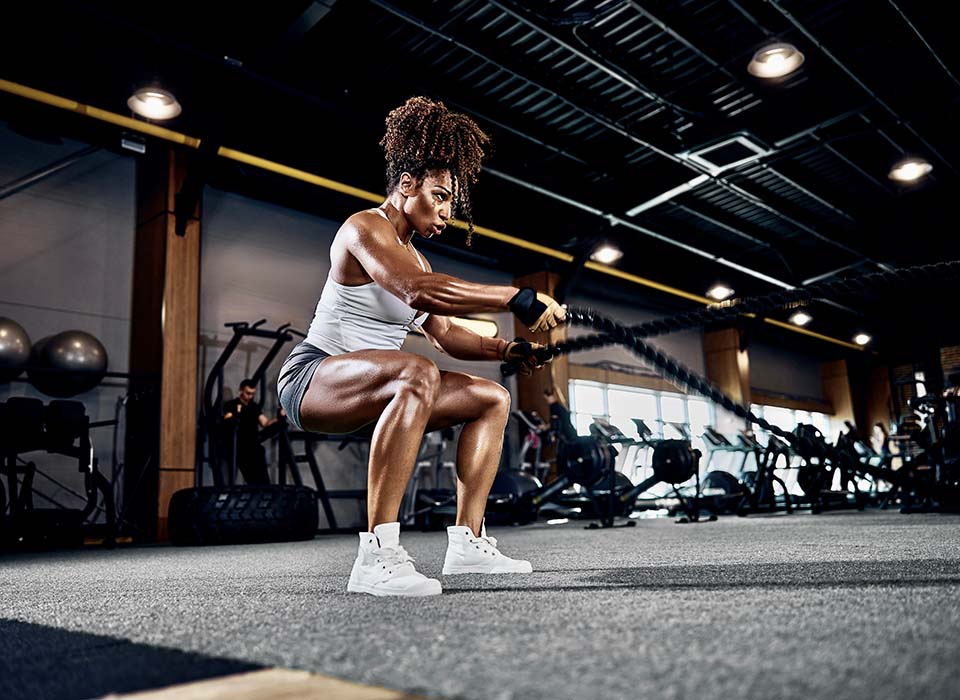Going to the gym is good for both physical and mental health, but injuries can happen if you’re not careful. Most gym injuries are caused by people trying to lift more weight than their body can handle. If you are lifting too heavy, you often compromise your form and injure yourself. Practice proper form, use equipment correctly and warm up beforehand to help prevent injuries.
Shin Splints
Shin splints are pain in the front of your lower legs caused by increasing how much you are active or changing the types of activities that you do. At the gym, shin splints are caused by running on the treadmill, especially when it is slanted, or jumping on hard surfaces. Shin splints can be avoided by properly warming up before a workout and limiting time spent running on slanted surfaces.
Lower Back Sprain
Lower back sprains are usually caused by putting too much pressure on the muscles surrounding the lower part of your spine. This pressure is often the result of not maintaining proper posture while lifting. People who are doing squats, deadlifts or any lifting with heavier weights are more likely to injure their back. Lower back sprains are often signaled with a sudden pulling sensation in the lower back but can quickly turn into sharp pain. If you are feeling any discomfort in your lower back, stop lifting immediately. The best way to prevent back injuries is to keep your spine neutral while working out. Posture support, such as a lifting belt, may help.
Elbow Injuries
Elbow injuries are often caused by lifting too much weight and moving too quickly. The most common elbow injury in the gym is tennis elbow (lateral epicondylitis), which causes pain and tenderness in the outside of the elbow that may go down the arm. It may be difficult to grip with your hand. The best way to prevent elbow injuries is keeping the elbow in a neutral position while lifting weights and by avoiding doing reps too quickly.
Pulled Groin
A pulled groin is caused by overworking the muscles on the inside of the thigh, such as by squatting or lunging. Often you will feel a lot of pressure followed by pain in the groin area. It can be uncomfortable to move your legs after you pull your groin muscle, so give yourself time to heal. Stretch and warm up before you exercise, and make sure you’re using good form when you squat or lunge to prevent pulled muscles.
Shoulder Injuries
A common shoulder injury in the gym is an injury to your rotator cuff. Any exercises that involve overhead movements will cause pressure on your shoulder which can lead to tears. The shoulder loses mobility when it tears so resting to let it heal is ideal. The best way to prevent a shoulder injury is to ensure your upper body is strong by incorporating more shoulder movements into your workout routine and to only lift what your body can handle.
Knee Injuries
Knee injuries are common at gyms since they can be caused by a variety of movements. Specifically, any movement that keeps your knee in a constant state of stress causes patellofemoral pain syndrome. The most common symptoms of this syndrome are a dull pain in the knee while doing squats or even walking up the stairs. To prevent these injuries, pay special attention to your posture when doing squats and deadlifts to make sure your legs are properly aligned. Wearing proper shoes that provide support and wearing knee braces can also help prevent injuries.
Equipment-Related Injuries
Gym equipment includes large, heavy weights and solid machines. Be cautious when putting free weights down so you do not drop them on your toes and be aware of weights on the ground to avoid tripping and falling.
Make sure to read the instructions and safety guides that are on the equipment. These instructions often have pictures of how to use them as well as safety tips, so they are easy to understand. When getting onto cardio equipment, check that your shoes are laced up properly and you are ready to begin before starting the machine.
